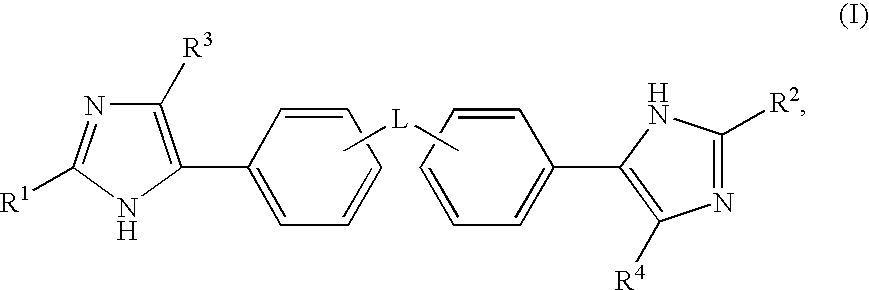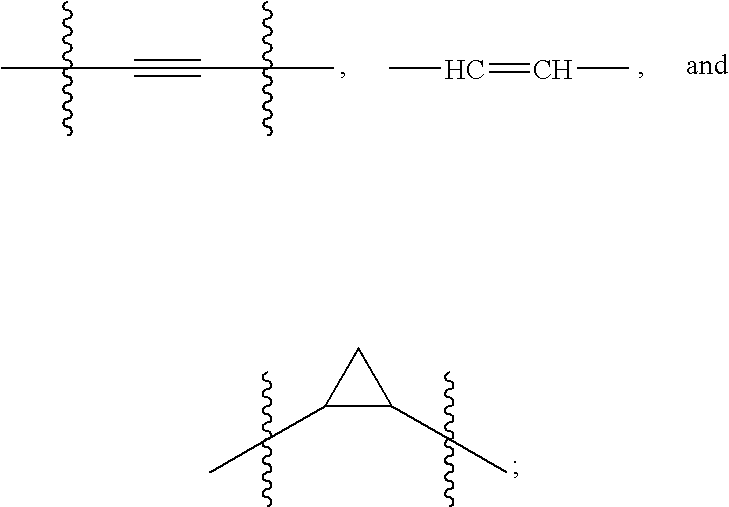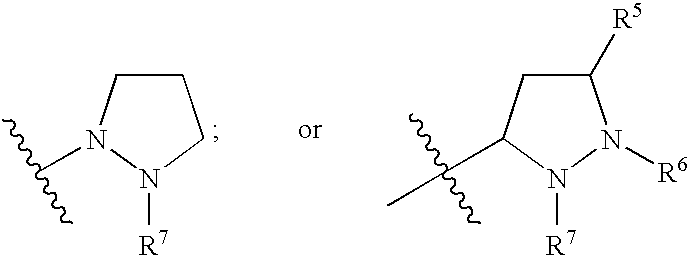Hepatitis C Virus Inhibitors
a technology of hepatitis c virus and inhibitors, which is applied in the field of antiviral compounds, can solve the problems of non-optimal success rate in achieving sustained viral response, numerous side effects, and considerable heterogeneity in the nucleotide and encoded amino acid sequen
- Summary
- Abstract
- Description
- Claims
- Application Information
AI Technical Summary
Problems solved by technology
Method used
Image
Examples
example 1
[0314]DIEA (0.14 mL, 0.802 mmol) was added to a mixture of pyrazolidine if (81 mg, 0.12 mmol), (S)-2-(methoxycarbonylamino)-3-methylbutanoic acid (0.049 mg, 0.281 mmol) and HATU (97.7 mg, 0.257 mmol) in DMF (2 mL), and the resultant reaction mixture was stirred at room temperature for 36 min. Most of the volatile component was removed in vacuo, and the residue was purified with two different reverse phase HPLC conditions (MeOH / water / TFA followed by CH3CN / water / TFA) to afford the TFA salt of Example 1 as an off-white foam (30.3 mg). 1H NMR (DMSO-d6 spiked with D2O, δ=2.50 ppm, 400 MHz): 8.13-7.96 (br m, 2H), 7.91 (app s, 8H), 5.29 (m, 2H), 4.71 / 4.52 (two overlapping br s, 2H), 3.52 (s, 6H), 3.25-2.90 (br m, 4.66H), 2.82-2.59 (overlapping of m & s, s is at 2.66, 8.34H), 2.35-2.23 (m, 1H), 2.13-2.04 (m, 2H), 0.92-0.67 (overlapped br m, 12H). LC (Condition 3 & 4): >95% homogeneity index. LC / MS (Condition 1): Rt=1.80 min. LC / MS: Anal. Calcd. for [M+H]+ C40H53N10O6: 769.41. found 769.34.
example 2-6
[0315]
[0316]Example 2-4 were prepared as TFA salts from intermediate if and appropriate acids according to the procedure described for the synthesis of Example 1. Example 5 was isolated during the preparation of Example 4, presumably resulting from an epimerization of the benzylic center during the coupling step. Example 6 (TFA salt) was prepared similarly from intermediate if by employing an equimolar mixture of (S)-2-(methoxycarbonylamino)-3-methylbutanoic acid and (5)-2-(methoxycarbonylamino)-2-(tetrahydro-2H-pyran-4-yl)acetic acid for the coupling step and separating the resultant statistical mixture of products by the HPLC technique that is described for Example-1.
ExampleRt (Condition 1 for Ex. 4 & 5; Condition 1a for Ex. 2, 3 & 6); homogeneity index (Condition 3 & 4)MS data21.56 min; >95%LC / MS: Anal. Calcd. for [M + H]+ C44H57N10O8: 853.44; found 853.51.31.71 min; >95%LC / MS: Anal. Calcd. for [M + H]+ C38H49N10O6: 741.38; found 741.50.41.91 min; >95%LC / MS: Anal. Calcd. for [M +...
example 7
[0317]
[0318]Example 3 (TFA salt; 45.6 mg; 0.047 mmol) was free-based (1 g MCX; MeOH wash; 2.0 M NH3 / MeOH elution), and the elute was concentrated and exposed to high vacuum for ˜2 hr. NCS (0.0153 g, 0.112 mmol) and DMF (1.5 mL) were added to the above material, and the reaction mixture was heated at 50° C. for ˜21 hr. After it was allowed to cool to room temperature, it was diluted with MeOH and purified with a reverse phase HPLC (MeOH / water / TFA) to afford the TFA salt of Example 7 as a light-yellow foam (32.7 mg). 1H NMR (DMSO-d6, δ=2.50 ppm, 400 MHz): 7.88-7.82 (m, 8H), 7.27-6.89 (two br m, 2H), 5.12-4.98 (br m, 2H), 4.70 (br m, 1.52H), 4.46 (br m, 0.48H), 3.56-2.50 (two ‘s’ overlapped with ‘m’, 19.5H), 2.03 (br m, 0.5H), 1.74-1.38 (m, 4H), 0.90 (m, 6H). LC (Condition 3a & 4a): >95% homogeneity index. LC / MS (Condition 1a): Rt=2.87 min. LC / MS: Anal. Calcd. for [M+H]+C38H47Cl2N10O6: 809.31. found 809.29.
PUM
| Property | Measurement | Unit |
|---|---|---|
| Current | aaaaa | aaaaa |
| Digital information | aaaaa | aaaaa |
| Volume | aaaaa | aaaaa |
Abstract
Description
Claims
Application Information
 Login to View More
Login to View More - R&D
- Intellectual Property
- Life Sciences
- Materials
- Tech Scout
- Unparalleled Data Quality
- Higher Quality Content
- 60% Fewer Hallucinations
Browse by: Latest US Patents, China's latest patents, Technical Efficacy Thesaurus, Application Domain, Technology Topic, Popular Technical Reports.
© 2025 PatSnap. All rights reserved.Legal|Privacy policy|Modern Slavery Act Transparency Statement|Sitemap|About US| Contact US: help@patsnap.com



